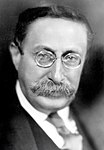| ||||||||||||||||||||||||||||||||||||||||||||||||||||||||||||||||||||||||||||||||||
All 612 seats in the Chamber of Deputies 307 seats needed for a majority | ||||||||||||||||||||||||||||||||||||||||||||||||||||||||||||||||||||||||||||||||||
|---|---|---|---|---|---|---|---|---|---|---|---|---|---|---|---|---|---|---|---|---|---|---|---|---|---|---|---|---|---|---|---|---|---|---|---|---|---|---|---|---|---|---|---|---|---|---|---|---|---|---|---|---|---|---|---|---|---|---|---|---|---|---|---|---|---|---|---|---|---|---|---|---|---|---|---|---|---|---|---|---|---|---|
| Registered | 11,768,491 | |||||||||||||||||||||||||||||||||||||||||||||||||||||||||||||||||||||||||||||||||
| Turnout | 84.45% | |||||||||||||||||||||||||||||||||||||||||||||||||||||||||||||||||||||||||||||||||
| ||||||||||||||||||||||||||||||||||||||||||||||||||||||||||||||||||||||||||||||||||
| ||||||||||||||||||||||||||||||||||||||||||||||||||||||||||||||||||||||||||||||||||

Legislative elections were held in France on 26 April and 3 May 1936, the last elections before World War II. The number of candidates set a record, with 4,807 running for election to the Chamber of Deputies. In the Seine Department alone, there were 1,402 candidates.
The Popular Front, composed of the French Section of the Workers' International (SFIO), the Radical-Socialists, the French Section of the Communist International (SFIC), and miscellaneous leftists, won power from the broad Republican coalitions that had governed since the 6 February 1934 crisis. Léon Blum became president of the council.
Results

The SFIC, predecessor of the Communist Party, more than tripled its seats total from 11 SFIC and 9 Union Ouvrière deputies in 1932 to 72 in 1936. The party made gains in industrialized suburbs and working-class areas of major cities. They also progressed in rural central and southwestern France (e.g., Dordogne, Lot-et-Garonne) The Radicals lost votes to the SFIO and SFIC, but also to the right. The SFIO declined slightly. In working-class suburbs, the party declined, but it gained votes in Brittany, to the dismay of the right. Only 174 seats were elected in the first round, 424 were decided in a run-off. The right fared better in the second round.
| 72149291112895128 | ||||||
|---|---|---|---|---|---|---|
| Party or alliance | Votes | % | Seats | |||
| Popular Front | French Section of the Workers' International | 1,955,306 | 19.86 | 149 | ||
| French Communist Party | 1,502,404 | 15.26 | 72 | |||
| Radical Socialist Party | 1,422,611 | 14.45 | 111 | |||
| Socialist Republican Union | 748,600 | 7.60 | 29 | |||
| Miscellaneous left | 28 | |||||
| Total | 5,628,921 | 57.16 | 389 | |||
| National Front | Republican Left | 2,536,294 | 25.76 | 95 | ||
| Republican Union | 1,666,004 | 16.92 | 128 | |||
| Total | 4,202,298 | 42.67 | 223 | |||
| Others | 16,047 | 0.16 | 0 | |||
| Total | 9,847,266 | 100.00 | 612 | |||
| Valid votes | 9,847,266 | 99.09 | ||||
| Invalid/blank votes | 90,692 | 0.91 | ||||
| Total votes | 9,937,958 | 100.00 | ||||
| Registered voters/turnout | 11,768,491 | 84.45 | ||||
| Source: Mackie & Rose, Nohlen & Stöver, Quid | ||||||
References
- "French elections a task for voters", The New York Times. 20 April 1936. Page 7.
- Thomas T. Mackie & Richard Rose (1982) The International Almanac of Electoral History, Macmillan, pp128–130
- Dieter Nohlen & Philip Stöver (2010) Elections in Europe: A data handbook, p692 ISBN 9783832956097





